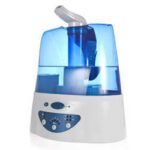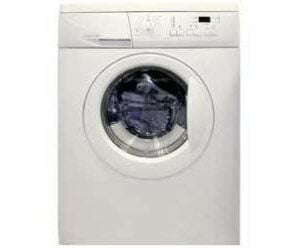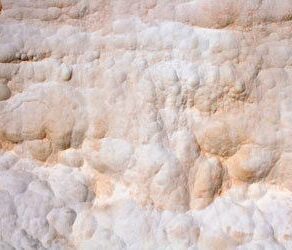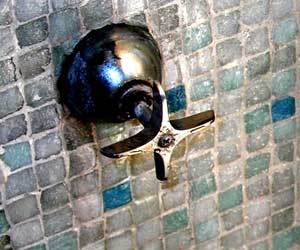Inge asked: How do I remove limescale from a humidifier? We got a humidifier (Vicks) after our son had croup this winter. The heating element seems to be aluminum and gets caked with really resilient limescale. I’ve tried leaving vinegar in it, but no joy. Should I pour vinegar into the water container so it boils/humidifies with a vinegar solution? Thanks!
Whenever surfaces are exposed to mineral filled water for extended periods of time, there is a chance of limescale, or hard water deposits developing. These can be difficult to remove, especially when they occur on the interior components of an appliance. If the unit can be disassembled, it may allow for easier cleaning. Check the user guide for cleaning instructions to go along with the directions below.
surfaces are exposed to mineral filled water for extended periods of time, there is a chance of limescale, or hard water deposits developing. These can be difficult to remove, especially when they occur on the interior components of an appliance. If the unit can be disassembled, it may allow for easier cleaning. Check the user guide for cleaning instructions to go along with the directions below.
You Will Need:
- White vinegar
- Old toothbrush
- Soft cloths
- Dish soap
- Water
- Glass cup or bowl
- Spoon or dull knife
Steps to Remove the Limescale:
- Begin by unplugging the unit. Never attempt to clean any part of the humidifier while it is still plugged in.
- Clean the exterior with a soft cloth.
- Scrub away any limescale or “white powder” with a toothbrush.
- If there are mineral deposits that cannot be wiped away with water or water and dish soap, soak a cloth with white vinegar and wrap it around the affected areas.
- Allow the vinegar to set on the deposits for a few minutes.
- Wipe the loosened deposits away with a soft cloth.
- Rinse thoroughly with clean water.
- If the deposits are inside of the heating unit/element, it may require some easy disassembly. Not all vaporizers/humidifiers can be taken apart. Consult the user guide or manufacturer’s instructions to see what is possible for your unit.
- If the unit can be disassembled, look for two sections – the heating unit (The metal rods or shroud that heats the water and will likely hold the build-up.) and the power cordset (Do not disassemble this section!).
- Remove as much of the deposits as possible with the brush and soft cloth. A spoon or dull knife can also be used to scrape the surfaces clean.
- If the deposits will not come off, fill a cup or bowl with a few inches of vinegar.
- Soak ONLY the affected areas in the vinegar for a couple of hours to overnight. Do NOT immerse the entire heating unit in any liquid, vinegar or water.
- Wash away loosened deposits with a soft cloth and clean water.
- Rinse the newly cleaned areas well.
- Once clean, allow it to dry or dry with a soft cloth.
- Reassemble in the same way that you took the unit apart. Ensure that all screws are back in the appropriate places.
- Repeat these cleanings monthly for optimal humidifier performance.
Additional Tips and Advice
- NEVER clean a humidifier while it is still plugged in or operating.
- Some minerals in the water may cause the container to turn black or brown. This does not affect the purity of the steam. The minerals will settle in the bottom and can be discarded when emptying the water.
- If the heating unit cannot be disassembled to be cleaned, it will need to be replaced. There are replacement parts available through the manufacturer or sometimes, it may be cheaper to purchase a new humidifier.
- Do NOT try to remove the shroud or electrodes for cleaning. These are factory set and cannot be reassembled to the same conditions.
- Do not use CLR to clean your humidifier or vaporizer. One of the hazard statments on CLR’s MSDS (Material Safety Data Sheet) says not to breathe the vapors or mist, so using it in a product that creates vapors or mist is not a good idea. You can wash/rinse out the product thoroughly, but there still could be some residue left.
- There are tablets and liquids designed to keep minerals from building up on the surfaces of humidifiers. If your water has a high mineral content and/or limescale is a constant problem, consider adding these to your humidifier water. Some examples of these products are BestAir Humidifier Demineralization Treatment Capsules or Holmes 2-in-1 Humidifier Cleaning Solution. There are also humidifier filter cartridges for demineralization. These products can be found at home goods stores, hardware stores, supermarkets and online.
- If the limescale is a consistent problem, switching to using distilled water in it will remedy the buildup.








Unfortunately, I have tried everything suggested here. I have left the heating element submerged in vinegar overnight. I have even tried to heat the element for a few minutes so it was hot vinegar, but to no avail. The layer of lime scale gets thicker and thicker. I have even tried that product called Lime-A-Way, but with the same results: no effect. Does anyone have another idea?
The answer to your question certainly was lacking, wasn’t it? I don’t understand why the answer to your question stating that vinegar doesn’t work would be to use vinegar! I am sorry; I can’t help with the answer-I had to buy a new humidifier because I couldn’t remove the scaling from the “old” one that I used for three weeks.
Try muriatic acid. Just make sure to neutralize it when done.
I used a butter knife in combination with vinegar and baking soda; clean as it’s going to get. Just about all gone. I would say 95+%.
Q1 : Can I put some of pure (99.99% and mint coin) 1 ounce silver coin in the base unit to kill the bacteria?
Q2 : Does the warm setting promote bacteria increase? If yes, is cool mist is better than warm mist or are they the same?
I agree, Ann. I think it’s bananas that the author wrote an entire post on how to clean a humidifier using vinegar when the person asking the question clearly stated that they already used vinegar and it didn’t work. Oy Vey! Just gotta laugh.
Vinegar does work!! Put it in and turn it on; let it boil in there – it may take more than a few minutes or, depending on how bad, hours!! Just add more as it evaporates away. I do it all the time and it’s clean as a whistle!!
JOE– Your are 100% correct. Vinegar does work when you PUT IT IN AND PLUG IT IN, LETTING THE VINEGAR BOIL. I HAVE BEEN DOING THIS FOR MANY, MANY YEARS. At 76, there are no plans to change.
For those of you that put vinegar in the water basin itself, does it make your house smell like vinegar then? I want to try this, but am just curious about the resulting smells, if any? Thanks!
Why didn’t I know about this before. I’m letting the vinegar boil, and it’s working beautifully. Smells like vinegar in here, but I don’t mind.
I put the humidifier under the exhaust fan hood in the kitchen. Filled with vinegar and let ‘er boil. No vinegar smell in the house. And yes, I ran the exhaust blower. :>))
Alternative would be to go outside with the boiling vinegar.
“Should I pour vinegar into the water container so it boils/humidifies with a vinegar solution?”
Be careful with putting vinegar in humidifiers with removable tanks. They usually have rubber valves that the vinegar will ruin if it’s in the water.
I had asked about the filter turning black after using it overnight. Someone said it could be minerals in the water but it didn’t do this last year nor last month. The filter is filled with large black spots until it is pretty much covered. Could this be something dangerous. Maybe I should not be using this unit. Scary.
I have an older humidifier and I do not understand how to wipe from there the stuff. This method does not help.
Boiling vinegar in the heating element helped! It’s like a miracle…
The black spots are mold. If you can’t clean them by wiping with a cloth or sponge, use bleach. Be sure to rinse the affected parts thoroughly. If it’s an actual filter with material media in it, try soaking it in a diluted solution of bleach. If the mold is in the media, it may not be possible to remove it completely. In that case, replace the filter or the humidifier/vaporizer.
If you have mold on the element, or anywhere in it really, I would strongly suggest tossing and replacing the whole unit. This is a device that makes vapor, which you will inevitably breathe. Vinegar soak then use a butter knife and/or stiff bristle brush to get majority off. It’s not instantaneous. Take time to soak through. If after over night it hasnt helped at all, it’s time to replace unit.
If you do not want to order a store bought product online is there a homemade remedy you can use instead?
Hi Carol,
White vinegar is actually considered a home remedy because it is a food (grocery) item that many people already have at home. However, lemon juice or a cut lemon can be used instead. Cream of tartar is also very acidic and can work. Even a can of Coca-Cola might work as that is also extremely acidic. Good luck!